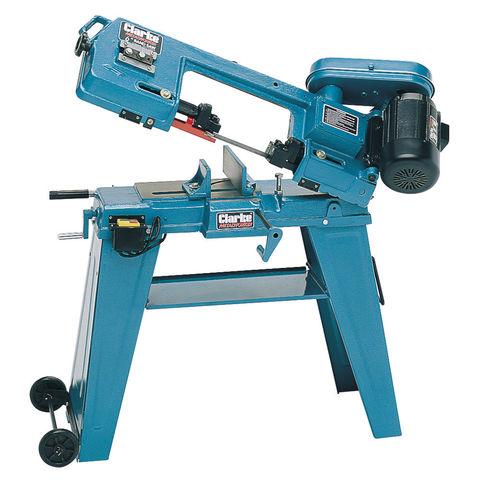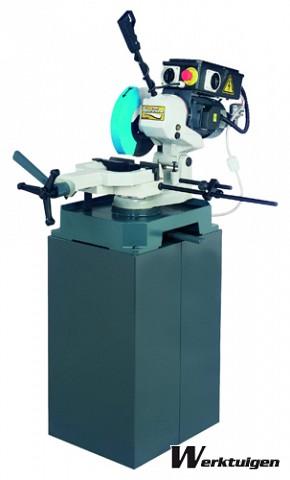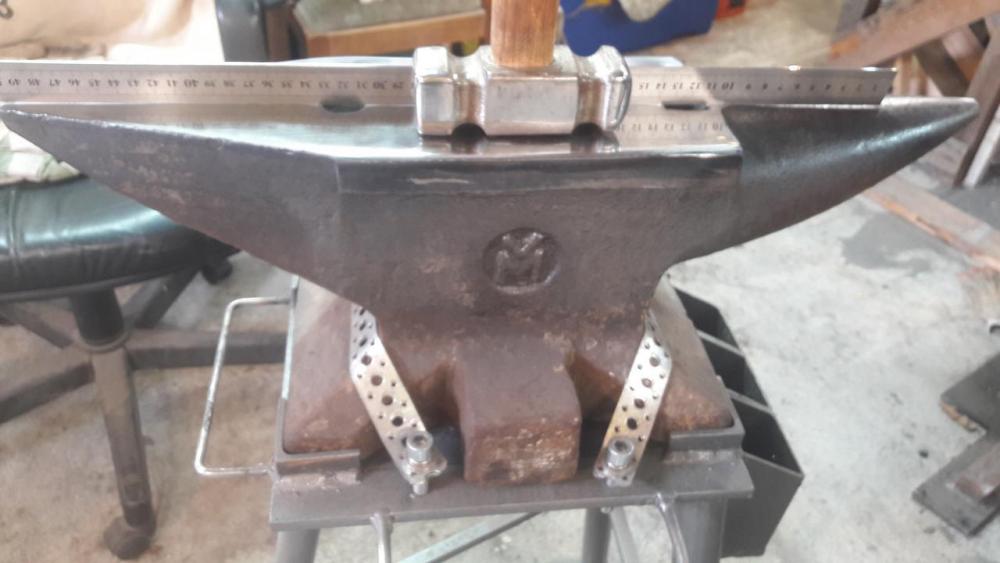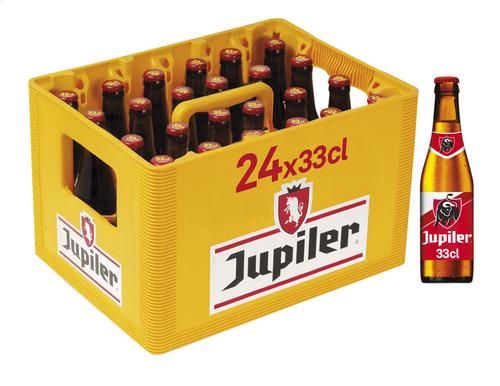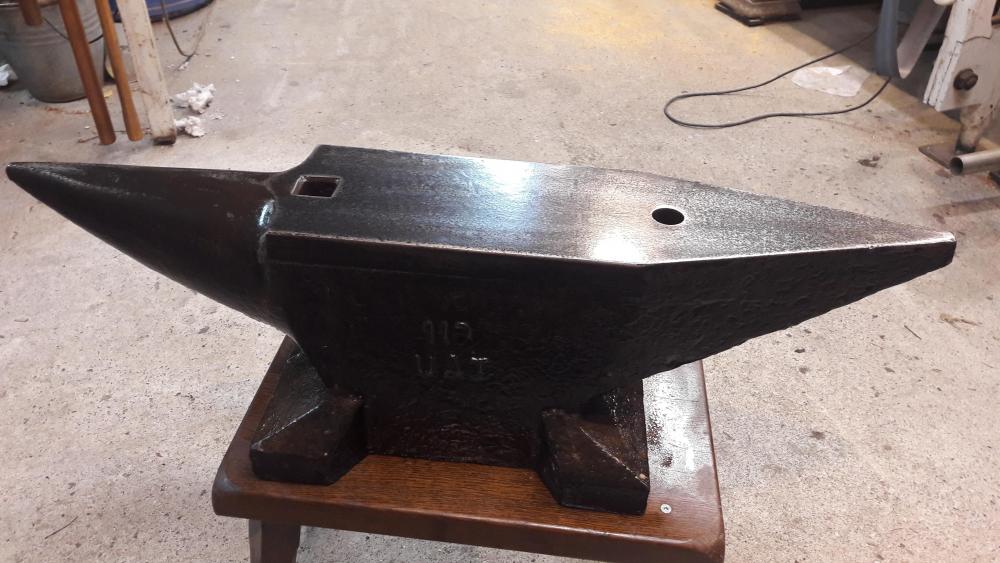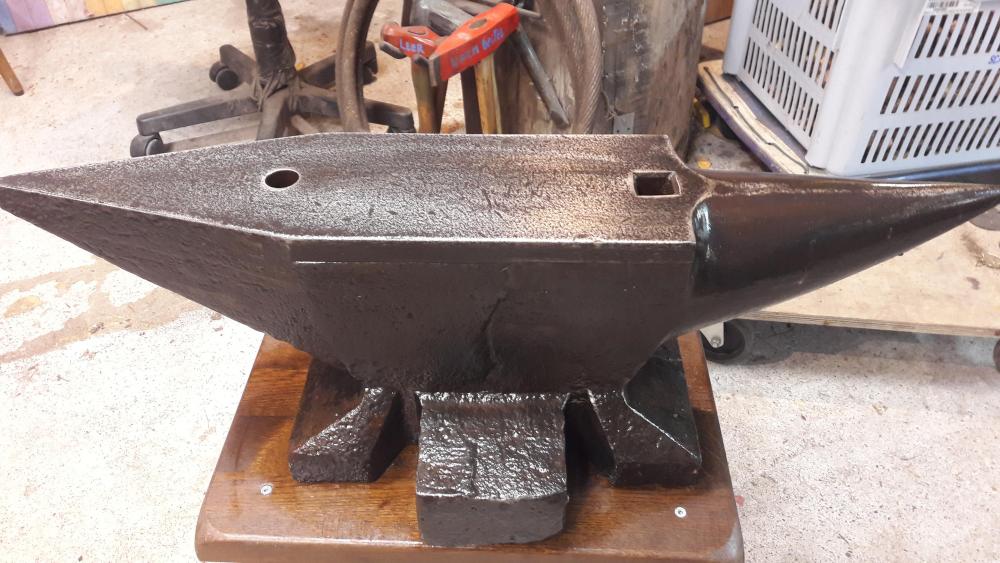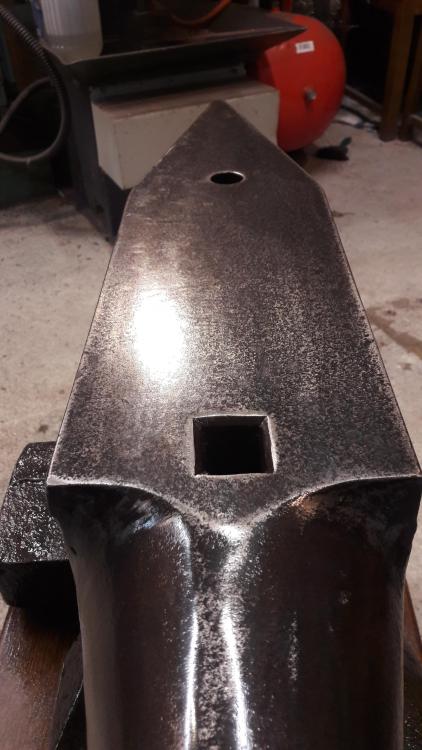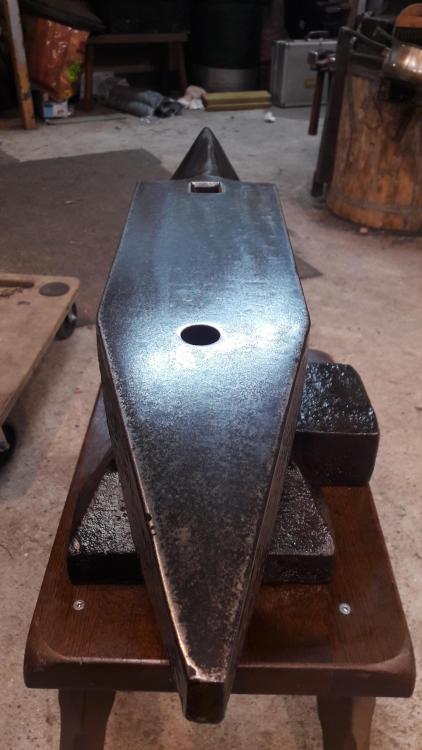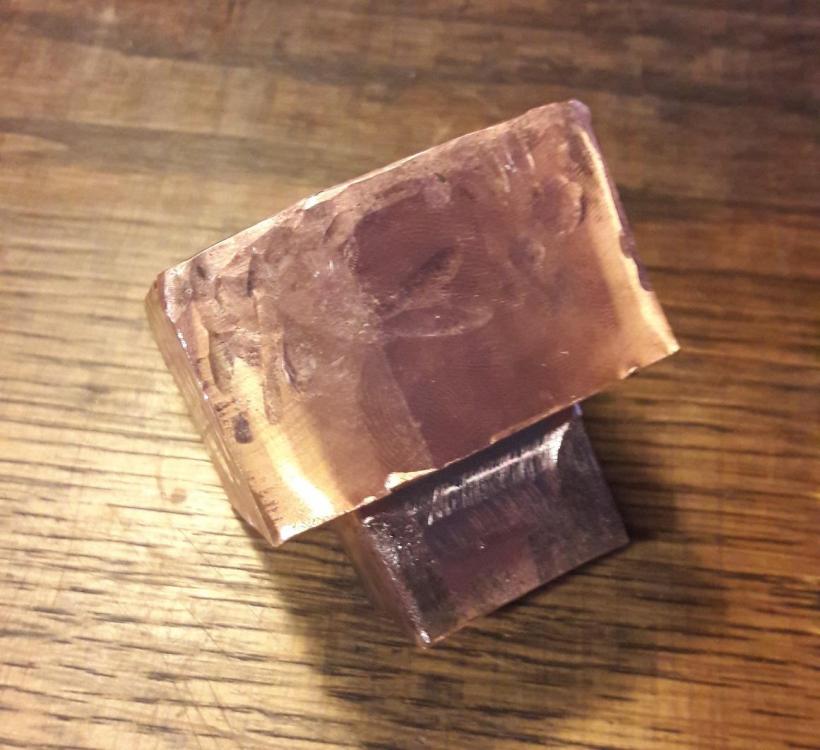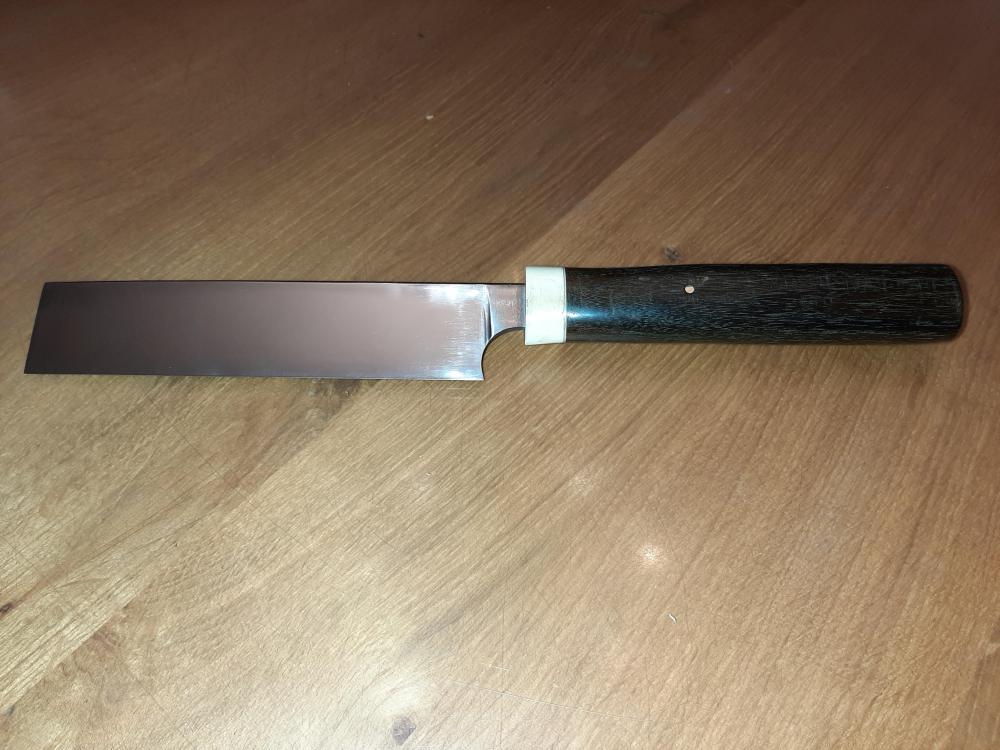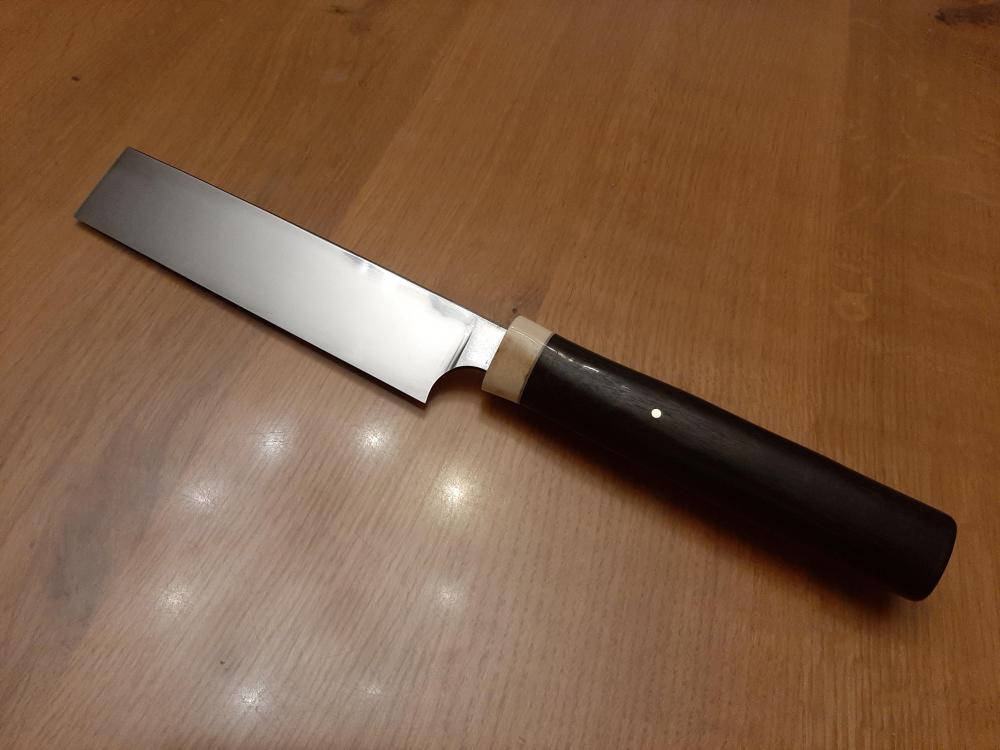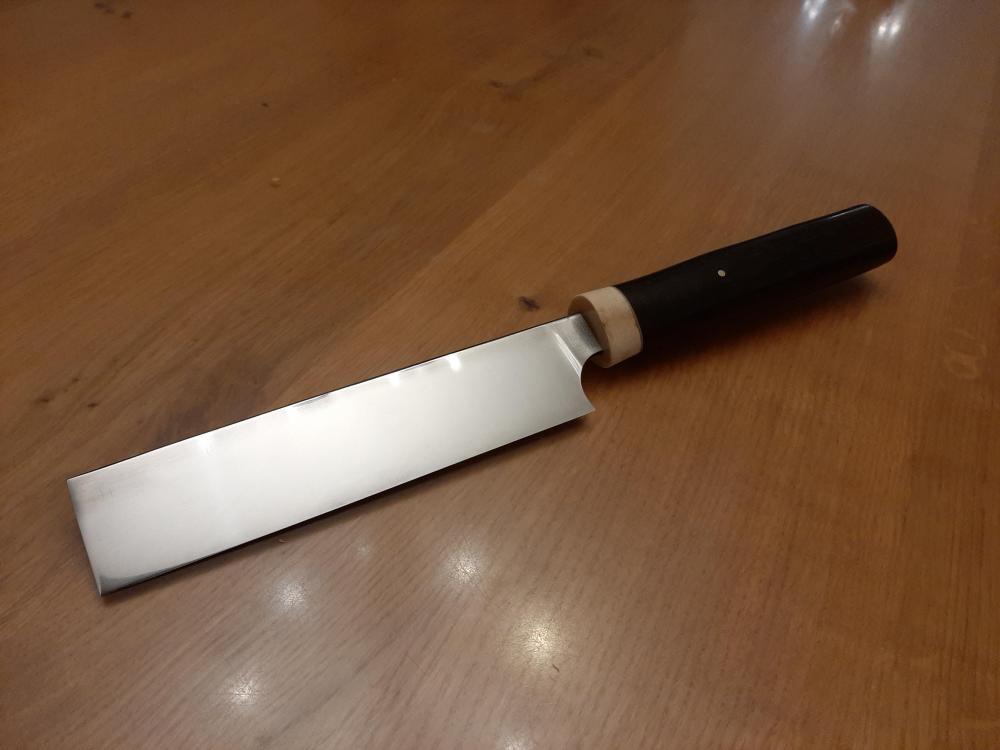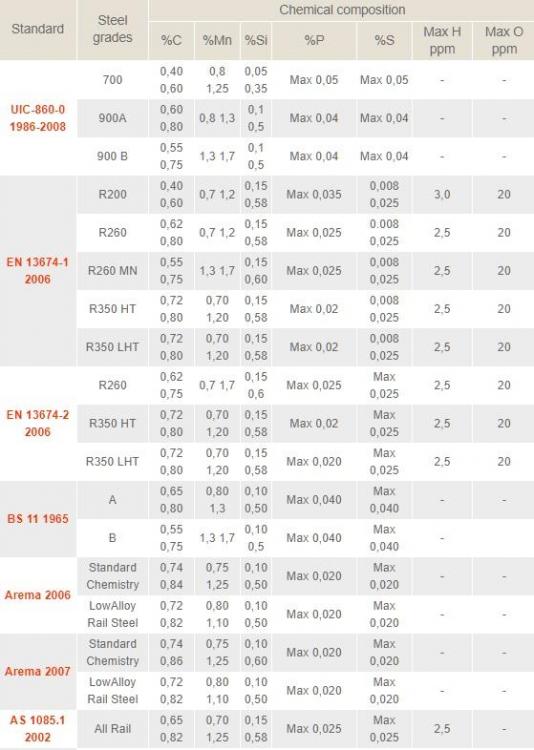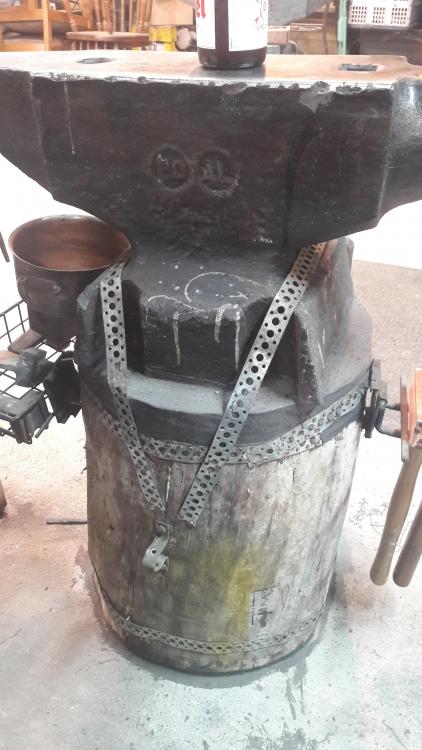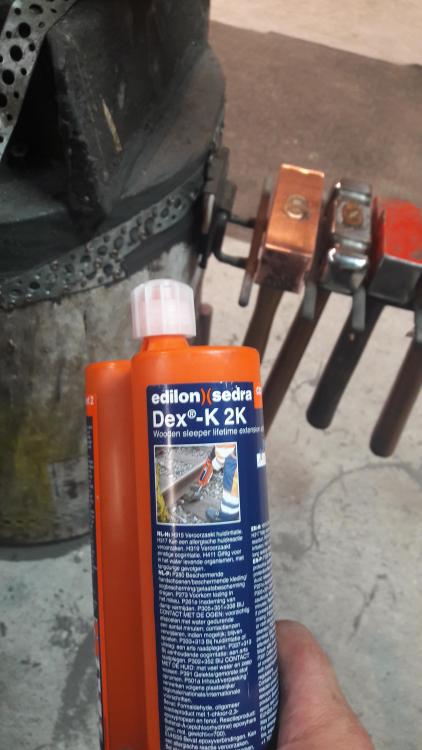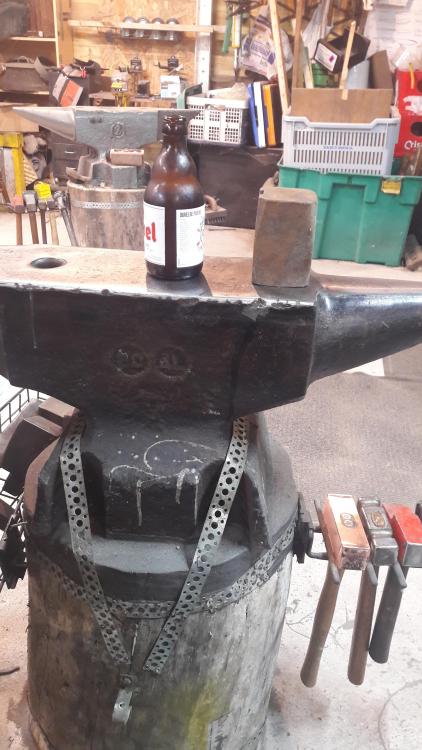
BartW
Members-
Posts
281 -
Joined
-
Last visited
Content Type
Profiles
Forums
Articles
Gallery
Downloads
Events
Everything posted by BartW
-
Love that stand... I use the space between the feet and the upsetting block to have a M20 bolt wich straps the anvil down. In a plate as thick as that; you could just drill and tap a heavy bolt in there :-)
-
Vulcan- Advice on this Vulcan anvil
BartW replied to Leo the welder's topic in Anvil Reviews by brand
I've used a train axle as an anvil for a while; and I still use it for my treadle hammer, and for beating things into round shapes :-) I've used a steel forming press-block as an anvil - it's a solid 200 pounds piece of D2 hardened to low 60'ies HRC .... My current anvils were cast along side naval guns from the same steel, I can tell ya, it's very good (and hard) steel. If you can cut a section off, you'd also have a decent anvil , as these tend to have very heavy wall thickness. I also used a tank barrel - from a scrapped leopard 1 tank, the 105 mm cannon - as source of steel for knives and for damascus ... very good steel. -
Metal bandsaw vs chop saw - which to choose ?
BartW posted a topic in Saws, bandsaws, hack saws, etc
Hello All; I'm doing some re-organizing of my shop; and in the metal-sawing departement , I've decided to keep only one saw. The contestants are : a metal bandsaw - the relatively cheap ones with the cheesy yet strong feet and crap wheels. I'll attach a similar picture. This bandsaw works really good, and can also be used for finder work; as you can stand it upright and use it as a light table saw. I put some lennox bi-metal fine tooth saw on it, very good. However; making it cutting straight requires some fiddeling, and I've had to replace the saw-guide bearings already once. It cuts nice; but tends to not cut straight down if you apply too much pressure. It's fairly low-powered (350 W at 2 fase 220V), but it can saw through a train track if you give it 30 minutes and add some WD-40 ... It's clamp is somewhat flimsy, but it works. And if something goes wrong, the bandsaw will grab and motor will stop spinning as it's not that powerful. The other contestant is a saw given to me by my dad; it's a BEWO chop saw; but not the fast rotating kind nor the carbide tipped, but a relatively slow rotation speed (60 rpm) , but Enormous amounts of torque, and a couple super fine HSS 10 inch (250 mm saws). It lives on it's ridiculously heavy stand, with an integrated flood coolant system. This saw weight in at 500 pounds, There's no clamp anymore; So I just use the clamp backing and some extremely heavy bessey welders /fitters clamps. This one can cut through a train track in under 3 minutes - including re-positioning the track once to cut from the other side. It cuts 40 mm square solid iron like it was butter, stone cold result, perfectly 90° flat cut, almost no burr. This motor runs 2000W at 3 fase 380 V. One saw is obviously more much powerful, precise, lower maintenance and industrial heavy duty, but in my opinion also more dangerous, as there's tons more force on the HSS saw blade. It is however not as flexible as the band saw and not as mobile. Given that I mostly do knifemaking and basic metal works; which one would you keep ? -
Well; I'd search some blacksmith in the neighbourhood and try and learn there. In the UK there are many blacksmiths. Look for classes, ask around ... greetz, Bart
-
330-lb. cast steel double-horn anvil with upsetting block
BartW replied to Ohio's topic in Anvils, Swage Blocks, and Mandrels
You know; if someone were to offer me this, I would first check it. Because it's relatively soft; it's easy for owners to "regrind" the surface. I've seen the lower hardness lower layers of steel peeking through; like strange blurry spots in the polished steel. Using a ball bearing or a really small peen hammer will tell you. Also; don't do the ball bearing or the peen test if it's bolted down. Put the anvil on a rag or something, and check if the "ring" is continous left to right. If is suddenly changes, this may indicate a crack in the anvil. -
330-lb. cast steel double-horn anvil with upsetting block
BartW replied to Ohio's topic in Anvils, Swage Blocks, and Mandrels
That is expensive. The form; the shape and the quality reminds me of this anvil below. It looks like a faceplate, but in reality it's a cast steel anvil, hardened face. Made in germany, but by a lower-end manufacturer, as mine had a fairly soft face. Workable, but every ding I made annoyed me so much I stopped using it, especially given that i have another 3 anvils that are Extremely hard. I ended up selling that one. I wouldn't pay that much money for it; "Used ain't new". -
Well; I know a foundry that can cast H13 or 1.2379 (D2 with some heavy vanadium in it), and if money is no issue, I'll think up a design. And a matching stand. and a matching swage block with foot. And given that they probably got a minimum amount of steel for one casting; a workbench ? one can dream ... On the other hand, I'm pretty set; I got two gorgeous Skoda anvils; First I thought they were 115 kilo's (250 pounds), but after weighing them they turn out to be 160 kilo's (350 pounds). Double horned solid tool steel, hardened & tempered face; softening down to the foot. I got both for next to nothing, so I already considered myself extremely lucky.
-
Anvil saved from the trash with a crack ?
BartW replied to BartW's topic in Repairing and Modification to Anvils
It was actually a crate like the picture below, with the comfy handle in the middle. So a metal stand, with the anvil strongly fixed to it, would silence the anvil? hmmm maybe I need to try that. greetz; bart -
Take a guess at the makeup of this anvil?
BartW replied to JamesBondo's topic in Anvils, Swage Blocks, and Mandrels
Looks like a nice anvil, but it also looks suspiciously never-used (crisp edges, crisp holes) ... but I'm no expert on anvils on the other side of the pond -
Anvil saved from the trash with a crack ?
BartW replied to BartW's topic in Repairing and Modification to Anvils
So don't worry about the "crack" (there's no trace of it on any other side, and the anvils rings like one piece) ? Has anyone ever seen a casting flaw like this ? It's a real ear-buster, it makes a half a minute very high pitch resonant ring which is truly unpleasant. Anyone any suggestion for a mobile stand that deadens the rings of an anvil ? greetz; bart -
Hello All; Every since I made some railway guys happy with a crate of beer for taking an ugly hunk of old tar off their hands (which turned out to be a gorgeous anvil), I've been kinda known as "that guy who likes anvils". Well; The railroad guys were taking apart another shop in the path of a new railway; and they found this anvil buried under the wood. They considered selling it; but didn't because it had a "crack" . They were considering tossing it in the to-recyle-metals container. So they called me to have a look, and so I went with a fresh crate of beer. I left the beer there, and left with the gorgeous beauty below. What they considered a "crack", is under closer inspection actually a casting flaw; like a pebble making it's way to the surface of the liquid steel. You can even see the pebble in the foot below; right where the track leeds. It rings a church bell - seriously WAY to loud to be usable in an urban area. We definitely need to tone this one down. It has crisp edges, even the holes seem hardly used. It's perfectly flat, rebounds in the 95-99% range; and seems to have a 1 inch thick hardened steel plate on top. it's 110 kilo's; which is 242 pounds. I can move it around for a couple of feet by myself; but it's killing my back. I cleaned it with a steel brush and rubbed some linseed oil on it. What do you guys think of this save ? Usable anvil ? It seems like it hasn't seen much use at all .. It was cast 1970-1972 according to the UAT factory specs.
-
First serious attempt at forge welding, failure...
BartW replied to mcb's topic in Blacksmithing, General Discussion
Very nice. looks like a very nice usable chisel after some clean up. Congrats. Feels good doesn't it ? Did you notice the difference in reaction to your hammer blows ? Once a weld is set; it feels like a solid piece of steel under a hammer; before it feels different .. more mushy, less rebound. -
Very nice knife actually. I would take the grind up higher too; for cutting performance and looks. How did you harden / temper it ? You also did a great job on the surface finish; you must have spent hours on that. Well done. As for the micarta; depending on which kind, and if you don't have access to sandblasting equipement; but you could also use a rotary steel brush on a bench grinder on it; in some micarta's it gives a nice finish ( like an orange peel texture - less slippery yet stil fairly dark).
- 13 replies
-
- fulltang
- leafspring
-
(and 1 more)
Tagged with:
-
First serious attempt at forge welding, failure...
BartW replied to mcb's topic in Blacksmithing, General Discussion
Light taps. And indeed, O1 contains very little chrome, but as long as you aren't welding it to itself, it should be OK. and the Manganese makes really nice black lines in damascus after some instant coffee etch -
Hello Guys; Wel today the guys at work were playing around with some huge chunks of soft pure copper in a mill. Then a guy asks me what they could mill for a testrun. At first I said a hammer, then he pointed to a stack of copper blocks with various hammer holes milled out. So I said "a hardie block?". Took me 5 minutes to explain what it was; but they were all in favor of doing something else (step-milling) then drilling in copper. Now I have a really big hardy hole; 35 mm(1,4 inch). So this thing is 55 mm (2,2 inch) square and 40 mm (1,6inch) high . Weighs about 1,5 kilo or 3 pounds. I had to hammer it in the hardie hole a couple times, hence the hammer marks covering the machining marks. Now other then cutting it up for other things, is this usefull ? It sits really tight, it has several usefull 90 degrees angles, and I can use a top cutting tool without fear of damaging the cutting tool (haven't found a top cutting tool that could even scratch my anvil). Soooo is this thing usefull ? It was free, so nothing lost except half an hour of my time. I also took the rest of the copper "test-pieces" home; trading stock
-
First serious attempt at forge welding, failure...
BartW replied to mcb's topic in Blacksmithing, General Discussion
I never flux between the layers, but as soon as I see colourchange - dark reddish - I start to put flux on it. At first once molten it's like thick sticky goo; but as flux gets hotter, it becomes as thin as water. If your billet is well fluxed, it will "flow" inbetween. and once it starts bubbeling and boiling; you're at the correct temperature. And your forge really doesn't look hot enough; so I share evfreek's opinion on the IR thermometer. Can you verify that thing with an actual thermometer with a K-type thermocouple ? -
First serious attempt at forge welding, failure...
BartW replied to mcb's topic in Blacksmithing, General Discussion
2100 degrees F is good enough for forgewelding, but somewhat on the low side as once you take it out of the forge it start cooling down very quickly. Especially for mild steel; you are looking for that yellow-white hot. Your forge doesn't look hot enough on the inside. If you are using borax; you need to look at it, and when it start bubbeling like boiling all over the piece (including the underside and inbetween the layers); you are at forgewelding temp on the outside of your billet. Give some time to soak then forgeweld. There should be enough borax so the whole billet looks wet. Your choice of materials is also ... questionable. Mild steel can be forgewelded; but since you don't actually know what it is; you can never be sure. I've had large bars that just wouldn't forgeweld at all, later I found they had added lead in the steel composition to make it more malleable and machineable.... The leaf spring is pretty much the same. I've had leaf spring for cores of laminates; I've used leaf springs in damascus. But I've also found leafsprings that just wouldn't weld together. This is typically with chrome in steel. I've always had trouble to weld chrome or nickel steels to themselves. I usually add a layer of something like O1 or 1095 inbetween, makes welding a LOT simpler. So if I may give you some advice; 1. Use something really simple like clean ground degreased O1 / file billet. Don't weld something containing chrome or nickel to itself. Keep the chrome containing steels for later when you've mastered this. 2. Make it really REALLY hot. The borax should be bubbeling on your anvil when you're hitting it. 3. I've learned most students the 3-welding heats principle. First welding heat; light taps, one side only. Basically just "set" the welds. Clean, flux. Second welding heat, on the other side , somewhat heavier taps, you should "feel" that the billet becomes one piece. Clean, flux. Third heat, hammer all you like; even on the sides, it should stay together and act like one piece of steel. Hope this helps. -
Hello All; Fresh from the forge; a customer-spec nakiri / usuba inspired knife. Specs: 160 mm cutting edge; thickness of cutting edge before sharpening is 0.2 mm. full flat ground; rounded back.3 mm thick 35 mm wide. Steel : 1.2442, I love this stuff. HRC 65. Materials: Reindeer guard; gray leather spacer, kingswood handle. The handle is far longer than I would have made it, about 50 mm; but the customer wanted it really long and flat at the end to crush garlic. This is also why kingwood was selected; no food poisoning danger. What do you guys think ? I recon it can cut up an apple or two once sharpened
-
Experimenting with hardface rod.
BartW replied to tanglediver's topic in Repairing and Modification to Anvils
Well; grind it as clean as possible, all the cracks out and such; and heat the anvil up to really hot, only then can you weld it. Well it's a little more complicated than that; slow cooling and excact temps depend. I'm intrested in the results -
Railway track hot cuts
BartW replied to Joel OF's topic in Hot Cuts, Anvil devils, metal cutting on the anvil.
Hello Guys; Railways are usually 0.7 to 0.8 % Carbon steel; with lots of maganese. i'll add a picture of the various grades in use in europe. Without a power hammer; that seems verrrrrry hard. I know the steel doesn't move well under the hammer. -
I put in a could of drops of that oil to make machine coolant, gives it a milky-white look. no more mosquito's :-) It's probably not that healthy, but it preserves the water much better over time. Also helps against freezing.
-
I'd recommend steel tipped boots + shin armour if you use them like that
-
I think people tend to overestimate their own qualities as a welder, and underestimate how hard it is to actually weld an anvil correctly without ruining it's functionality. You almost need to be a professional welder with a profound knowledge of metalurgy and anvils. I can get two pieces of metal to stick with various forms of welding and brazing, and I know quite a bit about hardening steels and such, but i don't consider myself good enough to weld an anvil, nor do I have the experience on how to NOT ruin the temper and grain of an anvil. Will I use a hardfacing rod to touch up an anvil ? depends. On my own anvils ? nope / never. On an anvil which is going to be used and I'll be accountable if something breaks/cracks? Nope. But if someone brings a real beat up anvil; and I explain them up front that I give no guarantees at all, and this will cost a nice penny in just my wasted time alone ... sure, I'll weld that. I've hardfaced vulcan's with a good chunk of the faceplate missing twice. Is the anvil as good as a new vulcan? No. But it will look shiny and straight. And sometimes that's all people want... a nice shiny straight anvil. Once a woman asked me to put a layer of stainless steel on top; so she could put the anvil outside as a memory to her late husband - and he was a hobbyist blacksmith who kept his anvil so flat and clean with a grinder the entire faceplate was almost gone except a couple millimeters. Wasn't a good anvil either, but I did that job for free. Every time I drive by her house and see that shiny anvil in the garden, makes me smile That was also a really good job for PR, because after that one, my requests for knives, sharpening services and other forgings almost doubled.
-
Here's my new stand. I complained the glue wasn't really heat-resistant (the hot scales tend to give the previous one a epoxy-resin smell); they told me to mix some fine white sand in the glue; and when curing; spray it with ashes. And so I did. The block of wood is 20 year old dry larix (hard woord). The block is glued to the floor; and the anvil is glued to the block. the straps are for security (the other one doesn't have straps) and preventing splitting. This anvil is a solid one piece really tool steel, and it used to be a real ear-buster; with the absolute immobility towards the ground; it has become very dead; even in the horns. You do feel it in your feet when you are whaling away at it with a sledgehammer; probably the concrete below transferring the shock. I added a pic of the glue itself (check the actual use-case of that stuff ). and I added a picture of my upsetting block; which is mostly in use because of it's nice square corners. The beer is optional
-
Well; I checked the powerpoint of the safety instructor, and he states the ISO norms : NEN-Iso 525 and NEN-EN 12413+A1.
